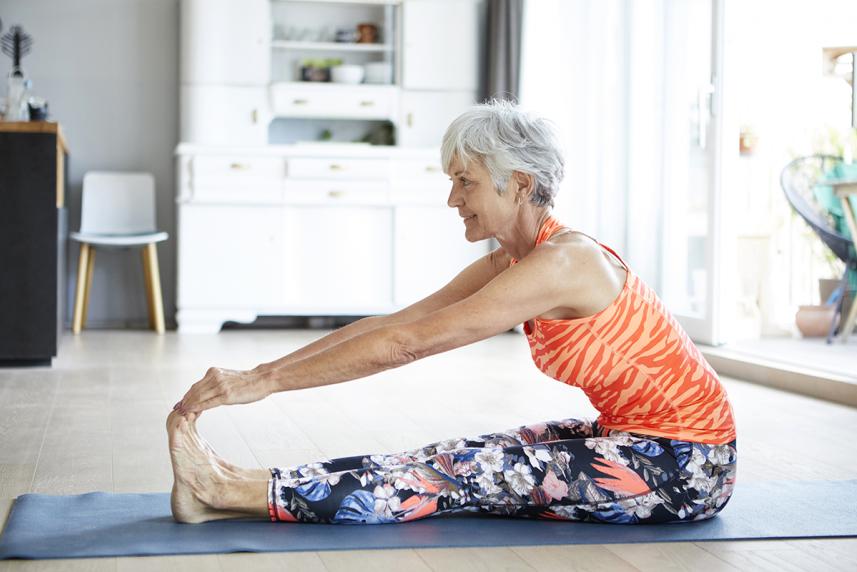Have you had a bone density test? 6 reasons not to wait
A bone density test can give you important information about your risk of osteoporosis. Learn more about keeping your skeleton strong.

It’s sad but true. As we age, we naturally lose bone density. In fact, your peak bone mass — the greatest amount of bone density you’ll have in your lifetime — is reached in your late teens to early 20s, according to the Bone Health & Osteoporosis Foundation (BHOF).
Your bones consist of protein, collagen, and minerals. They’re made of living tissue that’s constantly changing. In your younger years, bones grow, and old or damaged bone tissue is removed from the skeleton and replaced with equal amounts of new bone tissue. But around middle age, things start to shift. We begin to lose bone faster than we can build it.
That can lead to lower-than-normal bone density. It’s a condition known as osteopenia. When osteopenia becomes more severe, it’s called osteoporosis. This disease is estimated to affect more than 10 million Americans age 50 and older, says the Centers for Disease Control and Prevention (CDC). And it puts you at higher risk of bone fractures.
One powerful thing you can do for your bone health is to get a bone density test, says Claire Gill, chief executive officer of BHOF. Here’s why you should talk to your doctor about scheduling a screening.
Need a bone health specialist? Use our Find a Doctor tool to search for participating providers near you.
Reason #1: Falls are the leading cause of injury in older adults
Falls can be devastating on your bones. More than 300,000 older adults end up in the hospital with a hip fracture every year, according to the CDC. And more than 95% of those fractures are caused by falling.
“A bone fracture tremendously debilitates your quality of life,” says Gill.
Your risk of a fracture due to osteoporosis is highest if:
- You’re a woman.
- You’re 65 or older.
- One of your parents broke their hip.
- You have a small frame.
- You’ve experienced a bone fracture after age 50.
- You take certain medications, such as hormone therapy for cancer treatment.
- You have certain health conditions, such as chronic kidney disease and diabetes.
The good news is that you can take steps to reduce your risk of falling. Some stay-safe strategies:
- Do exercises that improve balance and strength.
- Fall-proof your home.
- Get your hearing and vision tested.
- Review your medications with your doctor to check whether any of them have side effects (such as dizziness) that may make you more likely to fall.
Reason #2: It’s an easy test
A bone density test is a type of X-ray that measures the strength and thickness of your bones. It’s known as a DEXA or DXA scan.
“This is noninvasive and has very low radiation,” says Gill. It’s also simple to get done. You’ll lie on a table fully clothed. Then an X-ray machine scans your body, which takes less than 15 minutes. There’s no preparation needed.
You’ll get your results as a T-score. A T-score score of -2.5 or lower indicates that you have osteoporosis. A T-score between -1.0 and -2.5 signals osteopenia. If your score is -1 or higher, your bones are healthy. That’s according to BHOF.
Reason #3: Older women are at higher risk
Women are four times more likely to develop osteoporosis than men.
When women begin menopause, their rate of bone loss speeds up. That’s because the hormone estrogen helps protect bones. During menopause, estrogen levels sharply decrease.
It is estimated that women will lose up to 1-2% of their bone mass per year for the first five years after menopause.
The U.S. Preventive Services Task Force (USPSTF) recommends that women start bone density testing at age 65. Postmenopausal women who are younger than age 65 but have an increased risk of osteoporosis should also be screened.
Though the USPSTF doesn’t have a recommendation for men, the BHOF suggests that men age 70 and over be screened and men ages 50 to 69 with risk factors for osteoporosis. And if you fractured a bone after age 50, you should also have a bone density test, BHOF advises.
Reason #4: Certain medical conditions are linked to osteoporosis
Some health conditions can contribute to an increase in bone loss. According to the Mayo Clinic, these include:
- Cancer
- Celiac disease
- Inflammatory bowel disease
- Kidney or liver disease
- Multiple myeloma
- Rheumatoid arthritis
- Thyroid problems
It’s a good idea to talk with your doctor about your risk factors. Your health care team can help you plan to manage any chronic health conditions.
Reason #5: A bone density test is a benefit of your Medicare plan
It’s recommended that women who had a fracture have a test within six months after the fracture. Those who are at risk of osteoporosis can have a bone density screening every two years as a benefit of their Medicare plan.
Getting regular bone density scans can help your doctor monitor the progression of bone loss. And if you’ve already been diagnosed with osteoporosis, bone density testing can help determine how effective your treatment is.

Automatic refills and our mail-order program are easy to set up and can save you money.
Reason #6: Knowing your risk can inspire you to take action
Knowledge is power. The results of your bone density screening will let you know whether you’re at risk of bone loss or if you already have it. And that information is key to getting the right treatment.
“As terrible and scary as osteoporosis is, we have really great treatments to stop the progression of bone loss as well as newer treatments that help rebuild bone,” says Gill.
There are several different classes of medication that are used to treat osteoporosis. Ask your doctor whether medication might be right for you.
What’s more, there are steps you can take to preserve the bone density you have, says Gill. Lifestyle changes such as eating a healthier diet or quitting smoking can make a big difference in bone health.
It can be scary to find out your bones aren’t as strong as they used to be. But staying up to date on your bone density scans can help you get the treatment you need.
Additional sources:
Peak bone mass: Bone Health & Osteoporosis Foundation
Osteoporosis facts, medical conditions: Mayo Clinic
Bone mineral density tests: National Institute of Arthritis and Musculoskeletal and Skin Diseases; Bone Health & Osteoporosis Foundation; U.S. Department of Health and Human Services: Office of Disease Prevention and Health Promotion
Osteoporosis prevalence in the United States: Centers for Disease Control and Prevention
Hip fractures in older adults: Centers for Disease Control and Prevention
Bone density screening recommendations: U.S. Preventive Services Task Force
Bone density testing coverage: Medicare.gov
H3832_8750_5MS619_24_C
© 2023, Linkwell Health, Inc. All content owned or licensed by Linkwell Health, Inc. All rights reserved.


